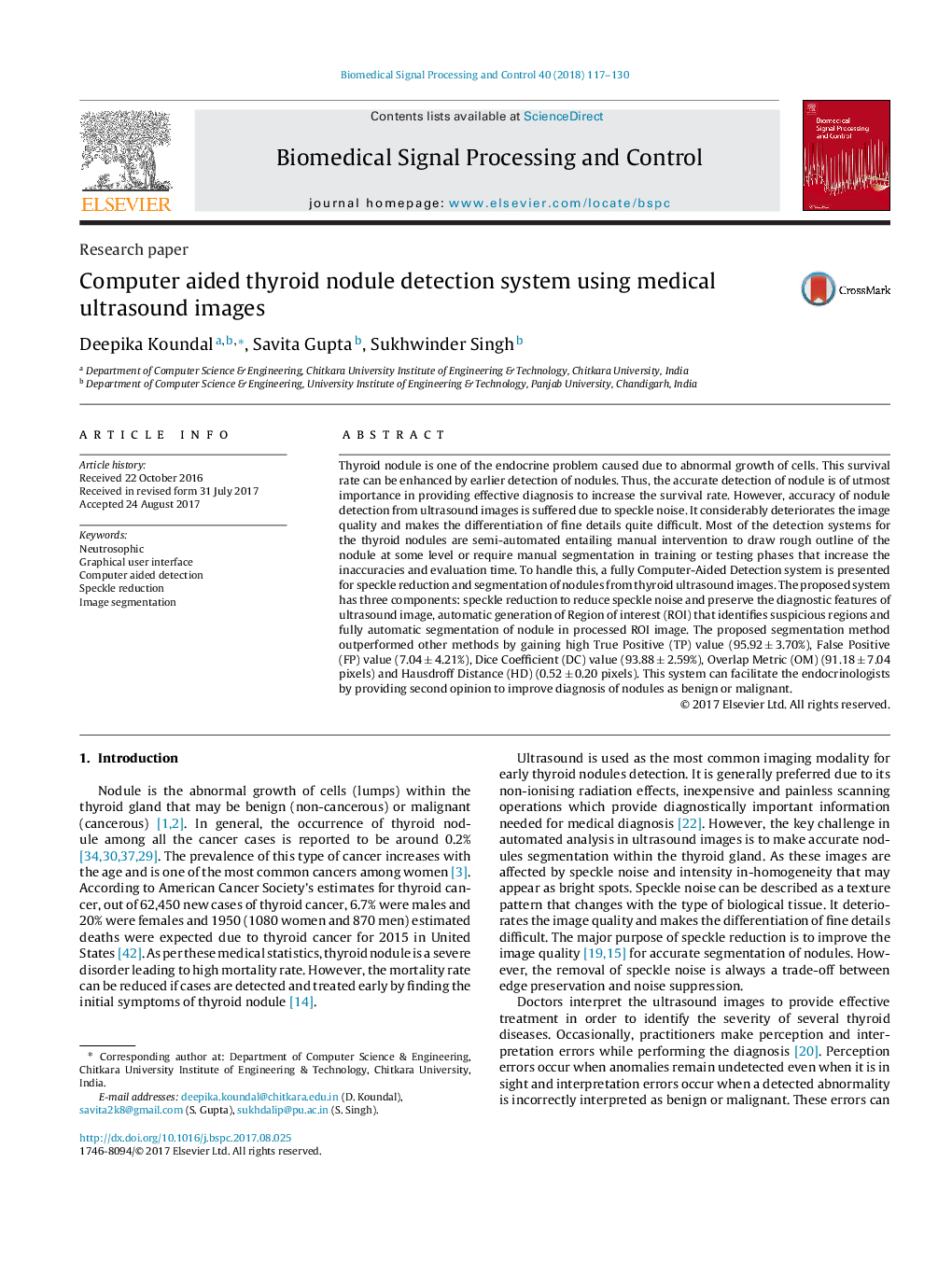| Article ID | Journal | Published Year | Pages | File Type |
|---|---|---|---|---|
| 4973383 | Biomedical Signal Processing and Control | 2018 | 14 Pages |
Abstract
Thyroid nodule is one of the endocrine problem caused due to abnormal growth of cells. This survival rate can be enhanced by earlier detection of nodules. Thus, the accurate detection of nodule is of utmost importance in providing effective diagnosis to increase the survival rate. However, accuracy of nodule detection from ultrasound images is suffered due to speckle noise. It considerably deteriorates the image quality and makes the differentiation of fine details quite difficult. Most of the detection systems for the thyroid nodules are semi-automated entailing manual intervention to draw rough outline of the nodule at some level or require manual segmentation in training or testing phases that increase the inaccuracies and evaluation time. To handle this, a fully Computer-Aided Detection system is presented for speckle reduction and segmentation of nodules from thyroid ultrasound images. The proposed system has three components: speckle reduction to reduce speckle noise and preserve the diagnostic features of ultrasound image, automatic generation of Region of interest (ROI) that identifies suspicious regions and fully automatic segmentation of nodule in processed ROI image. The proposed segmentation method outperformed other methods by gaining high True Positive (TP) value (95.92 ± 3.70%), False Positive (FP) value (7.04 ± 4.21%), Dice Coefficient (DC) value (93.88 ± 2.59%), Overlap Metric (OM) (91.18 ± 7.04 pixels) and Hausdroff Distance (HD) (0.52 ± 0.20 pixels). This system can facilitate the endocrinologists by providing second opinion to improve diagnosis of nodules as benign or malignant.
Related Topics
Physical Sciences and Engineering
Computer Science
Signal Processing
Authors
Deepika Koundal, Savita Gupta, Sukhwinder Singh,
